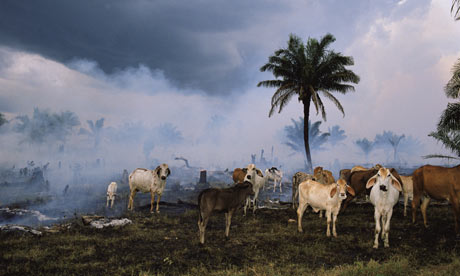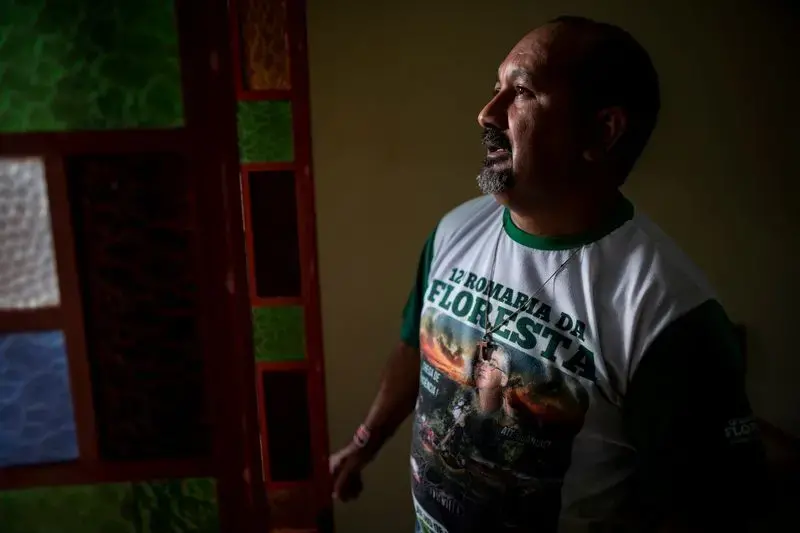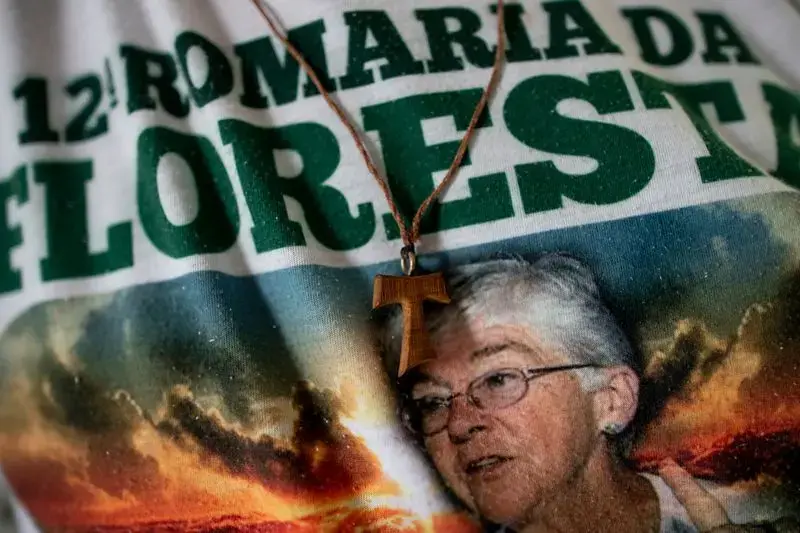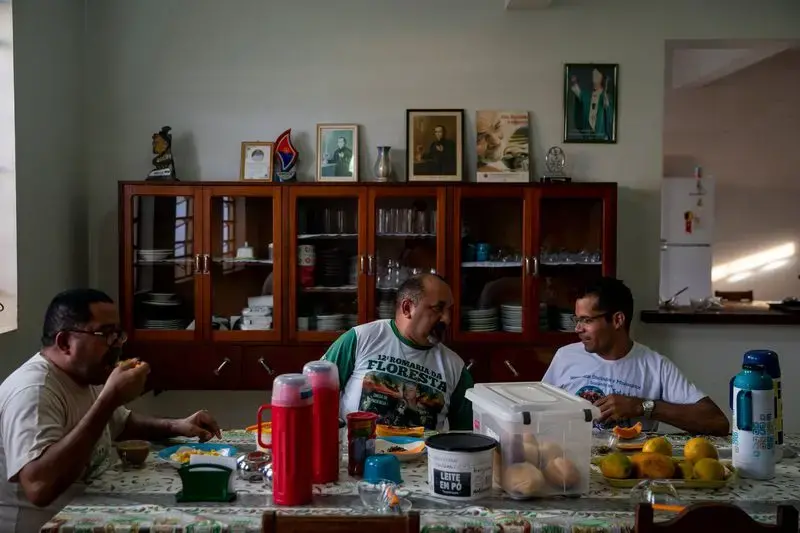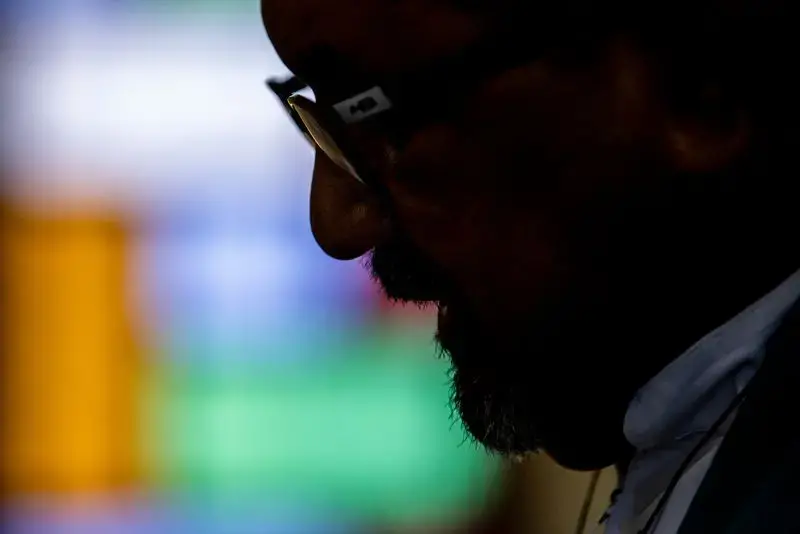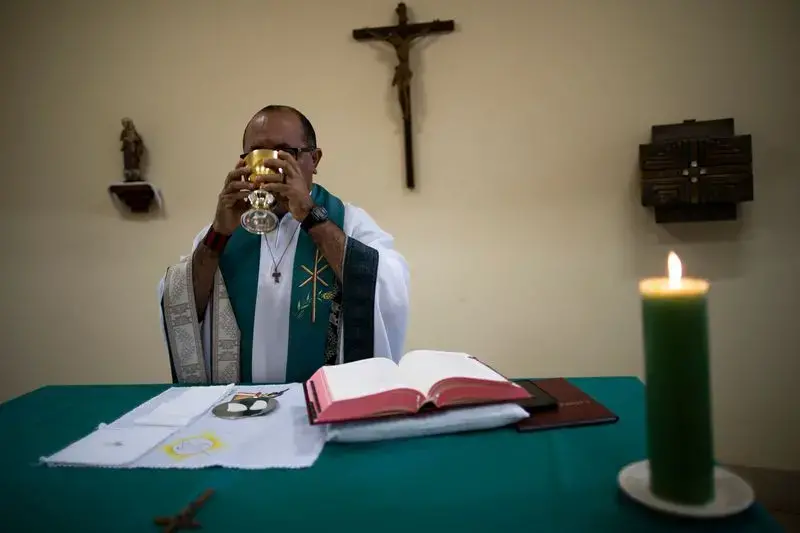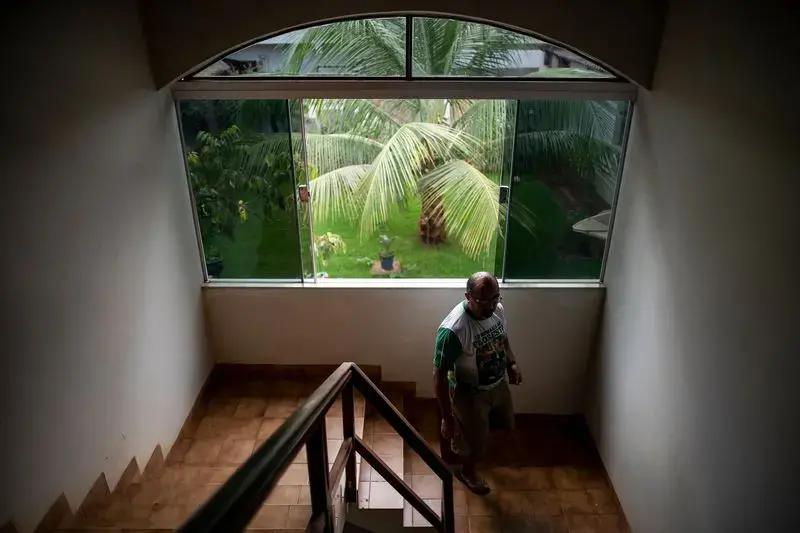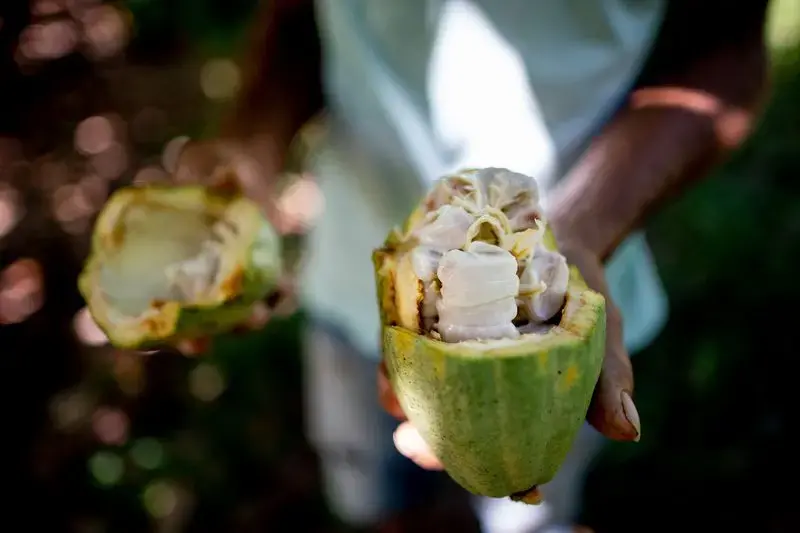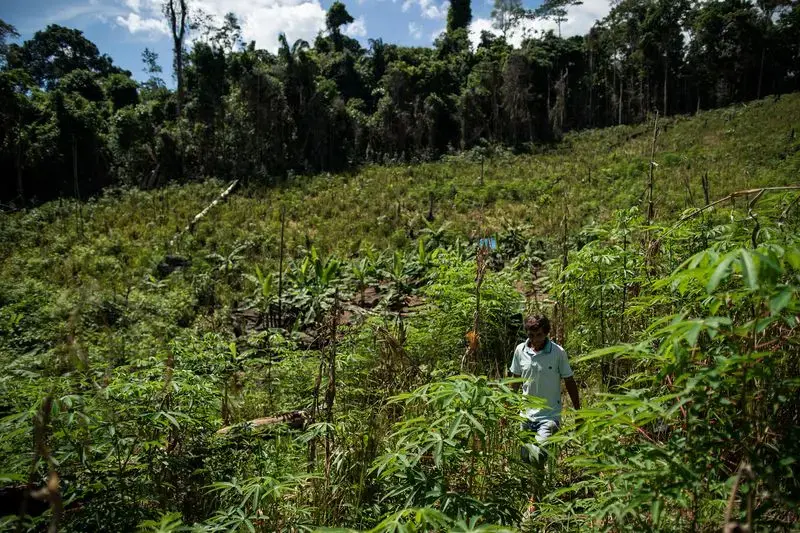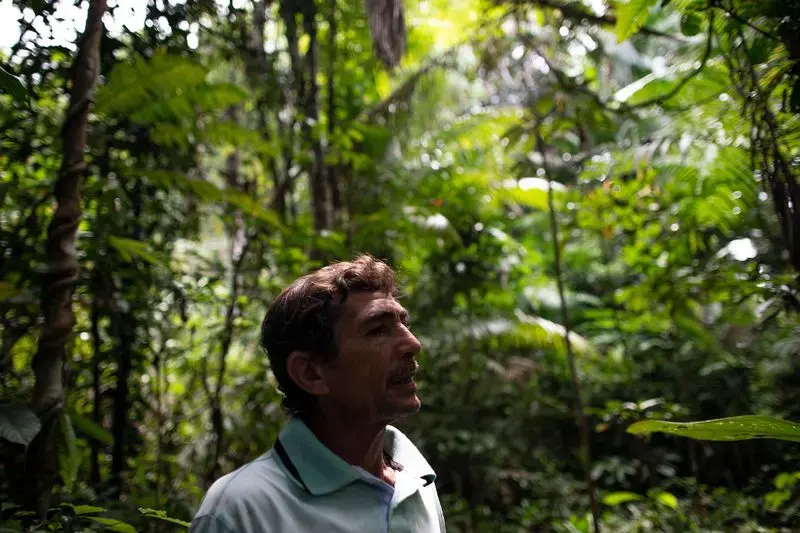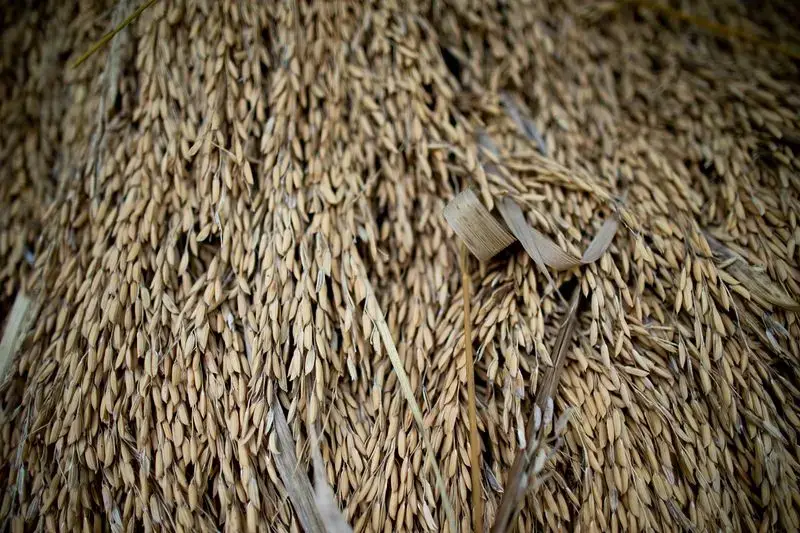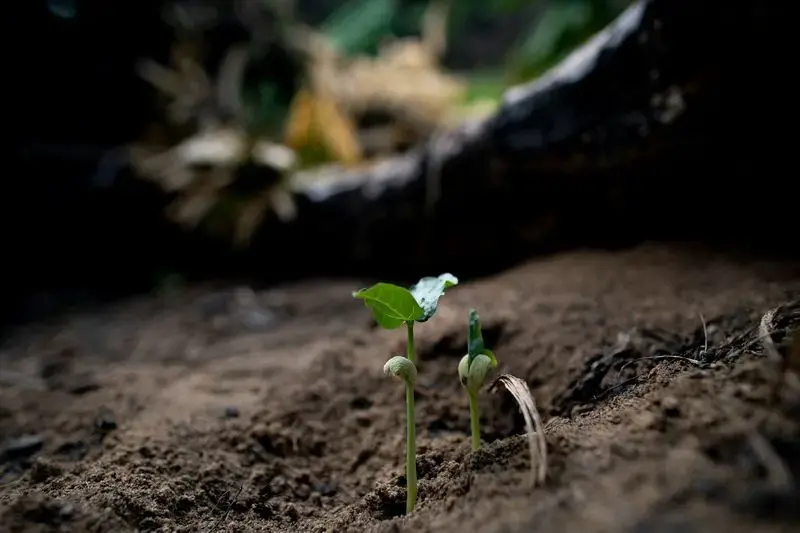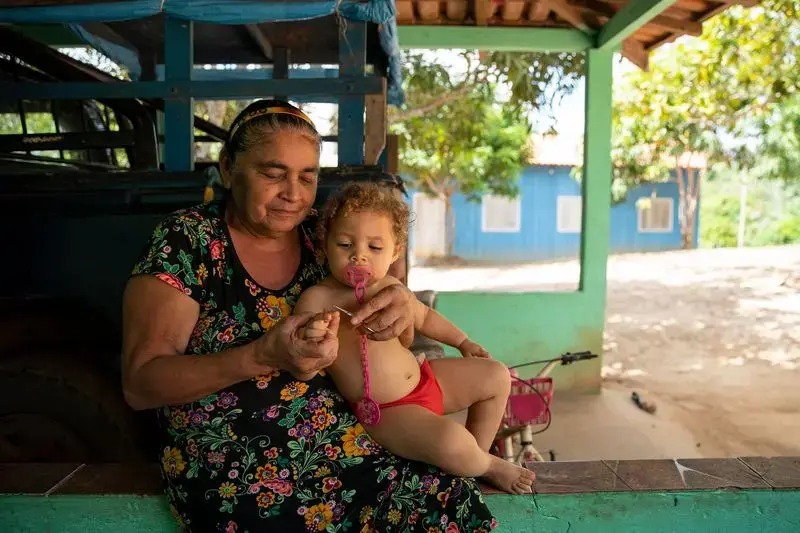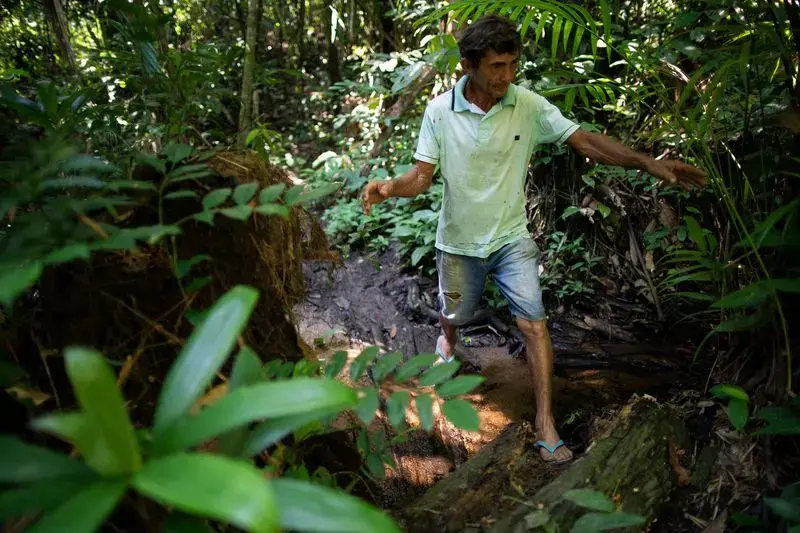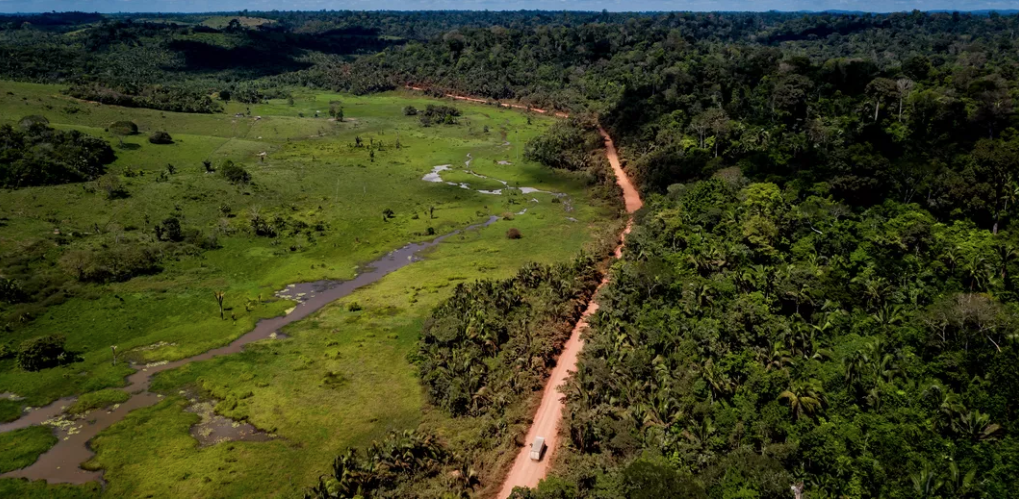
ANAPU, BRAZIL — The nun walks along the muddy jungle road, a Bible in her hand.
She is a small, sturdy woman with a soft soothing voice. She has white hair and pale skin. But she is nothing like the nuns you see in movies: she does not wear a habit or walk with her hands clasped reverently behind her back. She does not spend her days in quiet contemplation. She rides a motorcycle and camps in the jungle.
Often, from the shadows of the forest, she is watched. There is a bounty on her head. She knows this, but she doesn’t know that today she is being followed.
Her name is Sister Dorothy Stang and she is from Dayton, Ohio. When she first arrived here in the Brazilian Amazon, it was mostly forest. She loved walking in the shadows beneath the towering canopy, where the air was thick and musky with the scent of jungle. She sensed the presence of God there. But that was 30 years ago. Now it is February of 2005 and the forest is vanishing.
She is headed to a village called Boa Esperança, or Good Hope, to meet with a group of peasant farmers. She helped them start their settlement. It is a sort of experiment to prove that farming and rainforest preservation can go hand and hand.
This has made Sister Dorothy powerful enemies. Boa Esperança is on disputed land and wealthy families here lay claim to it. They want Sister Dorothy gone.
From the shadows two men emerge on the road. They block her path and ask if she has any weapons. She holds up her Bible. This is her weapon, she tells them. She opens to her favorite scripture and begins to read.
It’s in the Book of Matthew, Chapter 5. Jesus’ Sermon on the Mount.
“Blessed are the poor in spirit,” she reads. “For theirs is the kingdom of heaven.”
The gunmen listen as she continues to read. And then, when she is done, they aim their pistols and fire.
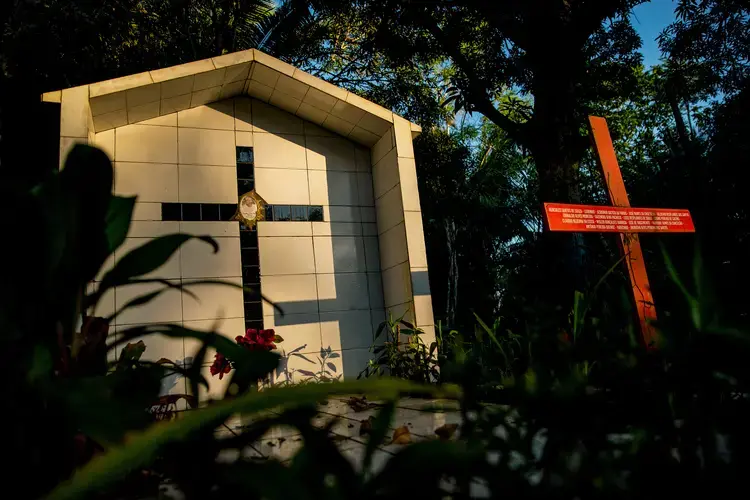
A Vanishing Forest
From hundreds of feet above, the Amazon rainforest seems to never end. There are muddy rivers crisscrossing through the jungle, cities and towns and villages that are home to 30 million people, and a vast sea of green, where indigenous tribes — some never contacted by the outside world — have lived for millennia. The sheer size of the Amazon basin, which stretches from Peru to Brazil, is dizzying: 2.4 million square miles, nearly the size of the continental United States.
In the burning season, which lasts from June through August, smoke covers parts of the forest, making it difficult to see from above. This year the fires were so bad they captured the world’s attention. Celebrities posted pictures on Instagram. The president of France offered help. “Our house is burning,” he tweeted. “...It is an international crisis.”
In June I traveled to the arc of deforestation for the Deseret News. I wanted to see what remained of Sister Dorothy’s legacy, and how much longer the forest she gave her life for would stand.
Under the smoke and haze, the picture of what’s happening there comes into focus. It’s complicated. And messy. There is a battle for the land. It pits peasant farmers against cattle barons, multinational soy conglomerates against the indigenous. It is a battle for the future of the world’s most important rainforest. It is a battle that cost Sister Dorothy her life.
It’s also part of a much broader conflict playing out across the globe, in places remote and often forgotten: near villages in Indonesia and the Congo and the Philippines, over coal and pineapple, timber and gold. As agribusiness and mining advance, forests are vanishing. In 2017 alone, 39 million acres of tropical forests disappeared. This is the equivalent of losing 40 football fields of trees every minute for an entire year.
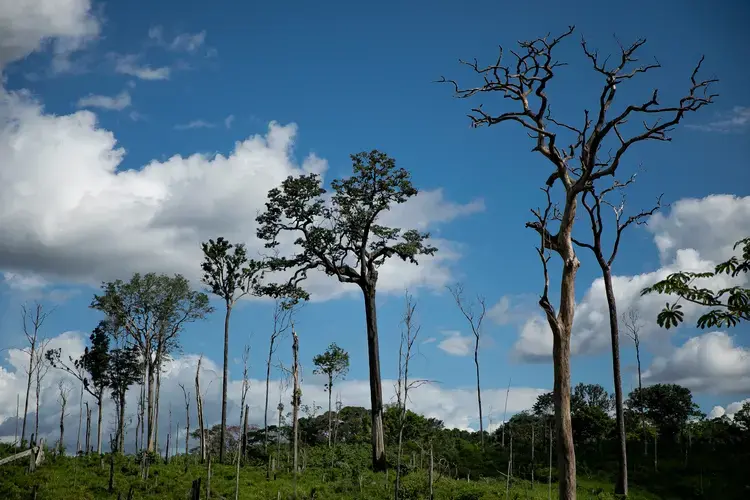
Nowhere are the stakes higher than in the Amazon, which contains 40 percent of the world’s rainforest and 10 to 15 percent of the planet’s biodiversity. Since the 1970s, an area of forest larger than France has been lost. Scientists warn that if another 3 to 8 percent disappears, we could reach an irreversible tipping point.
The Amazon is unique as a rainforest in that it recycles its own water. But beyond a certain point of tree loss, it would not generate enough precipitation to sustain itself. If that happens, weather patterns would change all over South America, and billions of tons of carbon would be released into the atmosphere. The impacts would be felt as far away as the Sierra Nevada.
The forces that drive deforestation mirror the march of modern civilization across every continent. It’s a story familiar to anyone with a rudimentary understanding of the American West: of poor farmers seeking opportunity flocking to the frontier, indigenous people defending their homes, and moneyed interests competing for precious natural resources. This was the dynamic in the Amazon when Sister Dorothy arrived in the 1970s, and in many ways, little has changed.
Sister Dorothy’s death drew international attention and was seen as a test of Brazil’s justice system in the Amazon, which has long had a reputation for corruption. More than 1,000 farmers, rural activists and religious workers had been killed in skirmishes over land in the 20 years before her death, according to the Catholic Pastoral Land Commission, which tracks rural violence. Only a handful of killers had ever been prosecuted. Conservationists hoped Sister Dorothy’s death would be a catalyst for change.
In some ways it was: the Brazilian government sent 2,000 troops to the area, declared a ban on logging on 20 million acres, and established two more federally protected parts of the forest. Her killers were convicted and sentenced to prison.
But in recent years, as deforestation has begun to escalate after a near decade of decline, so has violence. According to Global Witness, a nonprofit that tracks land conflicts, Brazil was the most dangerous place in the world in 2017 for this type of conflict, with 57 killings. In the last four years, 18 people have died in land disputes near Anapu, in the northern Brazilian state of Pará, where Sister Dorothy was killed.
‘Blood Will Flow’
Anapu sits in the northern end of the Xingu Basin, a once majestic stretch of forest marked by glittering rivers and thick jungle. Missionaries and explorers searching for El Dorado came here centuries ago, followed by slave traders and rubber trappers. I had been told that to understand what was happening in the Amazon, I needed to understand Brazil’s history here.
As I pulled into town, deforestation was on the rise all over region. The farmers were emboldened by the new president, Jair Bolsonaro, who had signaled he would not prosecute those who illegally cleared the forest. The air carried the faint scent of smoke. It was June, the beginning of the burning season.
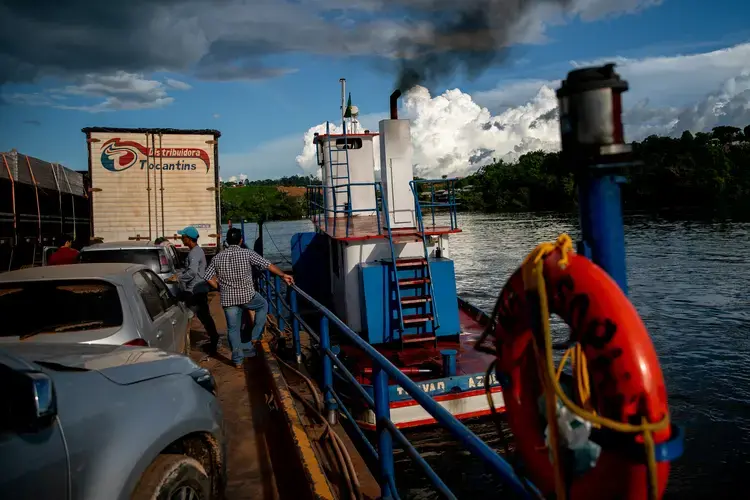
I found the home of Sister Jane Dwyer on a dirt road not far from the city center. Decorated with statues of the Virgin Mary and Jesus, it sat behind a yellow picket fence that seemed to sag in the humid tropical heat. Despite death threats after Sister Dorothy’s killing, Sister Jane, 79, had never left Anapu.

When Sister Dorothy arrived in the 1970s, the military dictatorship that ruled the country was pushing to settle the Amazon. If Brazil’s portion of the Amazon wasn’t tamed, the thinking went, neighboring countries would invade and plunder its resources. And so the government agreed to give farmers land if they would clear forest and make it productive. They flew families into the jungle and dropped them off.
“It was all trees and forest and they were mostly people from other parts of Brazil who didn’t have a clue how to live in the Amazon,” Sister Jane said. “It was nine to 10 months of rain. Malaria. Snakes. I don’t know how people survived. They didn’t mostly.”
Sister Dorothy moved to Anapu in 1982. Hundreds of miles away from the state capital, isolated by muddy roads nearly impossible to navigate during the rainy season, there was little in the way of impartial courts or police to intervene as conflicts began to escalate between peasants and wealthy landowners.
Sister Dorothy believed that the answer to growing inequality and the displacement of the poor lie in a concept called liberation theology. The movement’s seminal text, written by a Peruvian priest named Gustavo Gutierrez, held that God speaks through the poor, and the only way to truly understand the Bible is through their perspective. They believed this was the essence of Jesus’ message.
Theirs would be a gospel of action, in the streets and the slums, helping the poor meet their immediate needs. It would also mean calling out the “sinful” structures fueling economic inequality throughout Latin America.
“We came here to help the people, this is our mission,” Sister Jane said. “It doesn’t matter what you call it, our work is defined by this idea of walking with the poor, of helping them.”
In Anapu, they turned their focus to organizing and educating peasant groups about Brazilian land reform. According to the Brazilian constitution, land that had been illegally cleared and was not productive could be re-appropriated. Studying maps marking indigenous reserves and conservation units, they identified property that qualified. Sister Dorothy petitioned the Brazilian government to turn this land over to peasant farmers, some of whom had been kicked off their land by loggers and cattle ranchers.
The first project, the settlement of Virola Jatoba, would cover 161 square miles, and help peasants make a living farming small plots and extracting high value timber without deforestation. The second project, Boa Esperança, would cover 80 square miles.
This marked a dramatic departure from standard farming methods in the Amazon, which even today is slash and burn. Farmers do this as a final stage of clearing forest for pasture, but because the soil in the Amazon depends on the thick forest canopy, without tree cover it’s quickly degraded: most cattle pastures cleared from the forest are abandoned within 10 years.
Sister Dorothy persuaded the peasants who agreed to move to the settlements that there was a better way. They could farm the land without destroying the forest. They wouldn’t get rich, but they could pass their land down to their children, and it could last for generations.
The idea encountered immediate resistance. Landowning families protested that their property was being stolen. Death threats to Sister Dorothy began and police arrested her on suspicion that she was supplying guns to peasant groups and inciting violence. The Anapu city council declared her persona non grata.
But in the capital of Brasilia and within the ranks of the country’s leftist government, Sister Dorothy’s idea had support, and in 2004, families began moving into the two settlements under the protection of security forces that patrolled the only roads in and out. The settlements became a model for the rest of the Amazon and drew attention from conservationists around the world.
At the same time, violence around Anapu began to increase. A nearby stretch of the Trans-Amazonian Highway was about to be paved, which would bring trucks through Anapu carrying lumber and other products to market. The value of land around the city increased, and land-grabbers began killing peasants and burning down their houses.
Rather than retreating, Sister Dorothy followed illegal loggers into the forest, taking pictures. She also traveled to Belem, the capital of Pará, to meet with state officials tasked with protecting the forest. She’d often bring maps, showing the spots of illegal logging camps.
In 2005, a month before Dorothy’s death, loggers blocked highways and rivers, burned buses, and threatened to pollute rivers in response to a series of reforms passed by the federal government designed to reduce deforestation. They warned that unless the government backed down, “blood will flow.”
Sister Dorothy became something close to a saint in the years after her death. A documentary chronicling the quest to bring her killers to justice premiered at South By Southwest in 2008. An opera about her life played in Brooklyn. And every July, Sister Jane and the other nuns, along with Dorothy’s followers and members of the parish, walk the 34 miles from where she is buried in Anapu to the spot she was killed in what’s called “Pilgrimage of the Forest,” to recommit to the work of justice and land reform.
What will become of her legacy is an open question, however. The two settlements she started are still intact, but under threat. Loggers and land speculators have begun to invade and are clearing the forest and selling plots of land.
In this climate of fear, families are fleeing the two settlements.
A Man of Faith
Two hours west of Anapu, up the Trans-Amazonian Highway, the massive Belo Monte dam rises hundreds of feet from the forest floor, like a mountain, blocking and diverting the mighty Xingu River. A concrete behemoth that generates 11,000 megawatts of electricity for growing cities throughout the region, it has submerged hundreds of miles of forests and displaced tens of thousands of river dwellers, tribes and peasant farmers. It has also created economic opportunity and sent thousands flocking to nearby Altamira, a once sleepy outpost on the Xingu that’s been transformed into a raggedy boomtown with a shopping mall and a Burger King. Perhaps there is no place in the Xingu Basin that better illustrates the promises and perils of developing the Amazon.
Altamira is the temporary home of Father Amaro Lopes, the protector of Sister Dorothy’s two settlements and the heir to her mantle as the region’s most prominent land defender.
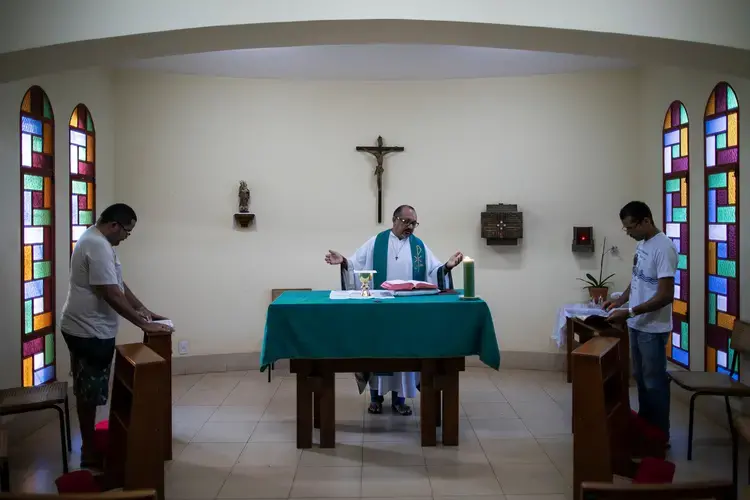
When Sister Dorothy was killed, Father Amaro was in a boat, headed down river to meet Marina Silva, who was then the nation’s environmental minister. Sister Dorothy had asked Father Amaro to hand deliver a letter to Silva titled “The Scream that Wasn’t Heard,” which detailed the rising violence in the region and unchecked deforestation.
When he heard Sister Dorothy was dead he collapsed and sobbed, he told me, unable to rise to his feet without assistance. He later went to the spot where she was killed and gathered dirt, still soaked in blood, from where she lay. He put it in a glass vial he still keeps with him.
“They thought if they killed her, we would leave, and it was the opposite. The settlements got stronger.”
In 2018, after years of death threats, Father Amaro was arrested by the police in Anapu and held in prison for 92 days. He was charged with criminal association, threat and extortion. Father Amaro says the charges were trumped up to intimidate him and get him out of town.
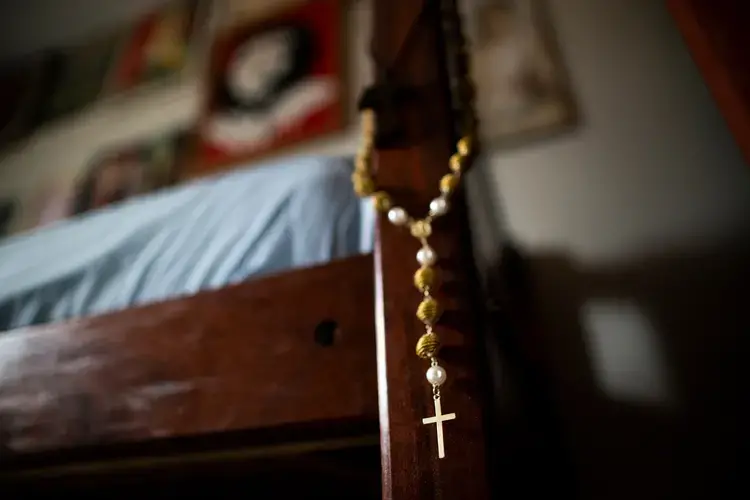
It worked: Father Amaro is now under house arrest at the house of the bishop in Altamira. A hulking white structure that sprawls over half a city block on the banks of the Xingu River, the building has the feel of a fortress with long hallways and rows of rooms where visiting nuns and priests pass through on the way to conferences or new assignments.
Father Amaro grew up not far from here, in the state of Maranhão, the son of a sharecropper. As a boy he wanted to be a priest, but his mom forbid it, telling him she needed him to stay at home and help his father farm.
But one day in 1986, at the age of 17, he read about a priest belonging to the Catholic Pastoral Land Commission, or CPT. Formed in response to liberation theology, the CPT advocated for the working poor, providing legal services to landless peasants and helping them gain access to public land that had been illegally cleared and abandoned. When he heard that a priest with the CPT had been murdered defending the land he decided to join the priesthood.
Three years later, he met Sister Dorothy. She invited him to Anapu, where he was ordained a priest in 1998.
He fell in love with her idea of a sustainable development and a model society where farmers would pool their profits to build schools and health clinics and sponsor scholarships for the children raised there, all of which happened.
“When we created the sustainable development, the ranchers and the lumber men said we wouldn’t survive, that we wouldn’t be able to raise one dog, or one chicken, or one tree. And it was the contrary. We raised in a sustainable way and we managed it,” Father Amaro said.
The threats against him began shortly after Dorothy’s death, and became more specific with time. “They told me that I’d be found on the side of the road with my mouth full of ants. There were people who would tell me up to the hour, the day I would be killed, but we just kept working.”
Father Amaro told me he longs to return to Anapu and lead the parish, but now it’s in the hands of a young priest who does not belong to the CPT. And so Father Amaro is waiting for a new assignment. Regardless of where he is sent, he plans to keep up his work with the CPT, and to continue to advocate for the poor. As he sees it, this is the gospel of Jesus Christ.
“There’s that part of the Bible that says, ‘When I was hungry, you gave me to eat, when I was thirsty, you gave me to drink’ and that’s what I prefer to do, that’s how I’m following Jesus,” he said. “No matter where I go, this is the work I will do.”
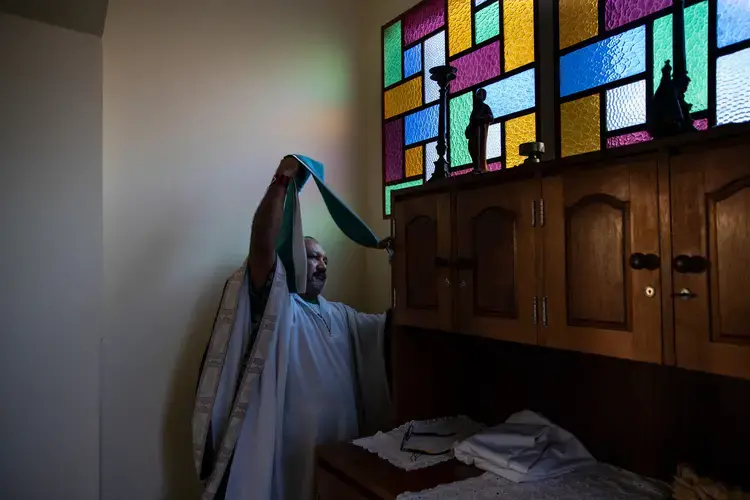
A Land Preserved
On one of my last days in Anapu one of the farmers who lives in the Virola Jatoba settlement named Alexandre (he asked not to use his last name for safety) agreed to give me a tour. He warned that it would be dangerous to go inside without someone who lives there because of rising tension with “invaders,” but agreed to meet me at the entrance just after dawn.
At this point I had been in Brazil for several weeks, traveling across the state of Pará, where the most dramatic deforestation has occurred over the past 20 years. I was dismayed by how little forest seemed to be standing along the Trans-Amazonian highway. It looked like a tropical storm had ripped through the region and only left stumps and a few strands of trees.
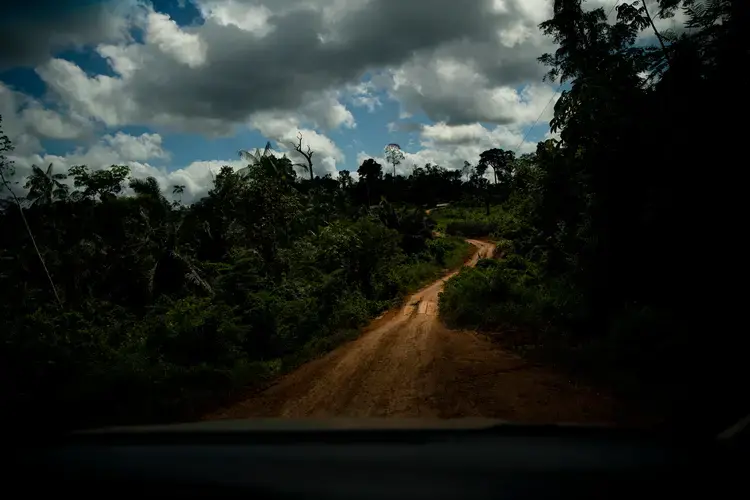
The Virola Jatoba settlement was different. Thanks to Sister Dorothy’s vision to keep 80 percent as forest in the 161-square-mile region, the original canopy had survived. As we drove down the narrow dirt road into the settlement, trees towered hundreds of feet above us. The air was cool and fragrant. A mist rose from the top of the canopy as the sun rose.
Alexandre took us to the home of one of the original settlers, a simple brick and stucco structure painted turquoise. The farmer, Elias da Silva Lima, led us to his farm, where he had planted cocoa, rice, watermelon and corn. He said he made enough from the cocoa he sold in town to buy whatever his farm didn’t supply.
He admitted that at first the words “sustainable development” didn’t make much sense. Like others around Anapu, he only knew slash and burn farming. But he said with Sister Dorothy’s guidance, and technical engineers and agronomists brought in by Embrapa, a federal agency, he and other farmers quickly adapted, and begun to increase their yields without having to remove more trees.
As Elias led us into the forest behind his farm, the air filled with the sound of a burbling creek and a chorus of birds. Elias explained that here, the forest was wild and untamed. In the afternoon, you could hear the low hum of howler monkeys from hundreds of yards away. Jaguars had killed his chickens and pigs. One nearly attacked his wife while she was hanging laundry, he said with a laugh. He seemed proud to live in harmony with the land.
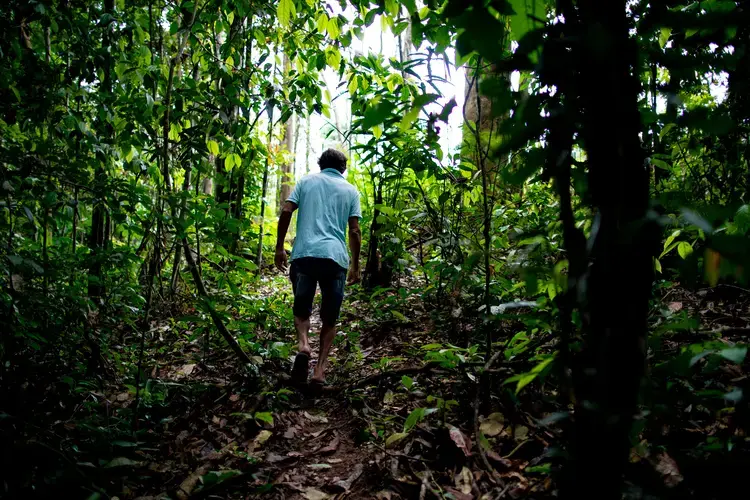
While farmers throughout Brazil are required to maintain at least 50% of the forest on land they own, the two settlements Sister Dorothy started are unique in that they maintained continuous forest. This has allowed the biodiversity that existed prior to the settlements to remain more or less intact, whereas the fragmentation that has occurred in other areas near the Trans-Amazonian Highway has caused a dramatic loss of species.
“Thanks to Sister Dorothy, my thinking changed,” he said. “Instead of seeing the forest as a place where I could exploit and get rich, we have learned to live in a way that preserves it for future generations.”
As we left Elias’ farm I asked Alexandre what had changed over the last few years. A concerned look crossed his face. There had once been 150 families here, he told me. They shared Sister Dorothy’s mission to preserve most of the forest and felt good about it. Over time, her cause became their cause.
But as the years passed, many of the pioneers left, selling their land to families who had never met Sister Dorothy, and didn’t share her vision. They chafed at the restrictions, which included not being able to bring in tractors or bulldozers to clear forest. With only 20% of their land available to farm, it was not possible to build a herd of cattle, or raise enough crops to make much of a profit.
Around 2014, a confluence of events dramatically changed life within the settlement. Nearly 2,000 miles away, in the capital of Brasilia, a massive corruption scandal led to the ouster of the leftist Worker’s Party, which had pushed for preservation of the Amazon. The new business-friendly administration cut funding to agencies dedicated to environmental preservation and there was no longer money for the security forces that patrolled the entrances to the development.
Outsiders began invading and taking over plots of land. Then in November 2017, the farmers inside the settlement were preparing a load of timber from a sustainable development project when they heard the rumble of motorcycles. Between 150 and 200 men surrounded the encampment and warned the farmers that if they didn’t leave, they’d kill them.
The farmers fled, and the invaders took over the timber encampment. It took the federal government one year to expel them, and then they came back. Just a week before I arrived, the government had returned with police forces to expel the invaders again, but some were still in the forest.
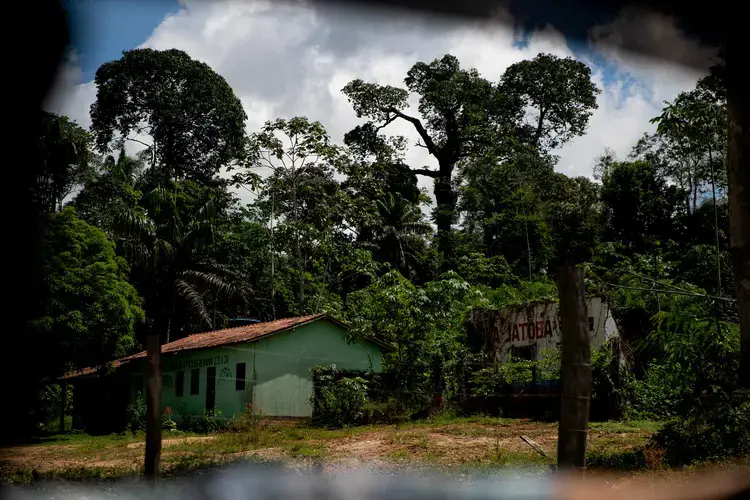
As we drove, Alexandre pointed out abandoned houses and property now under the control of invaders. He spoke softly, almost in a whisper, as if the information he was sharing was dangerous and he didn’t want to be overheard.
“It’s getting dangerous for me to live here. We’re getting threats,” he said. “We need the support of the government to protect this land. When they were here to enforce the rules, things went well. But now people come in without fear and chop down the forest.”
He said he could already see changes caused by the loss of trees. The rainy season was a month shorter than when he was a kid.
“It used to rain all the time but as the forest is changed and destroyed we have less rain. The seasons are different. What we fear is already happening.”
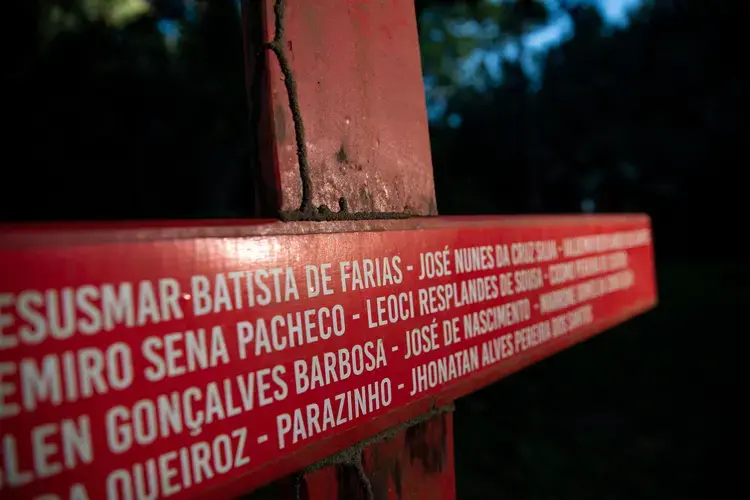
An Uncertain Future
Despite what the Amazon looks like from the sky, the roads that cut through it show a landscape in the midst of a radical transformation. Along the BR 163 and the BR 155, two highways I traveled during my trip, the forest is largely gone, replaced by pasture for cattle.
The future of the rainforest, unless something dramatically changes, can be seen in the south of Pará and the north of Mato Grosso, two bordering Brazilian states. Terrain once covered by thick jungle is now almost entirely denuded, replaced by fields of soy and cattle pasture.
Since Sister Dorothy’s death, the population of Anapu has steadily grown. What was once a dusty hamlet now has the intensity and energy of a small city of 27,000. Most of the growth is due to the construction of the Belo Monte Dam, which brought thousands of workers to the region, transforming the local economy. But now that it’s completed the workers are looking for other ways to feed their families, Sister Jane said. Many have come here, and wonder why parts of the forest that surround the city are blocked from much needed economic development.
Like other parts of the world with tropical forests, the answers here are not simple. While mining companies in Canada and the U.S. are behind some of the deforestation in the Amazon, and major American food companies like Cargill and Walmart have been linked to deforestation to make way for cattle and soy, sometimes the battles over the land are between local families simply trying to eke out a living, or send their children to college. They wonder why conservationists from parts of the world that have already cleared their forests now come to Brazil and tell them to do what Americans and Europeans weren’t willing to do.
Sister Jane believes, however, that Sister Dorothy was on to something. For nearly 15 years, the families that have lived in her two settlements have sustained themselves while preserving the forest. The indigenous tribes who live even deeper in the Amazon have done so for thousands of years.
“We have to decide if we want to live in a way that preserves the land for our children and grandchildren, or if we want to use it all up now,” she says.
Sister Dorothy would be amused by how she has become a martyr, and something close to a saint, Sister Jane says. She would be pleased, however, how her name has become associated with forest preservation, and the distribution of land to the poor. It is because her memory is still alive that the media even know about Anapu, Sister Jane says, or visit the town to see what’s left of her legacy. Without that attention, she worries the ranchers and loggers who want the forest inside the settlements would run off the few families who remain.
“And that’s why we stay,” she says. “We are the eyes to the world. If we leave, there will be a massacre.”
And yet, she is 79 years old, and the other nuns who live with her are also advancing in age. The priest who has replaced Father Amaro does not belong to the CPT. His focus is on growing his parish and celebrating mass, not visiting the villages and helping the people there.
And so Sister Jane prays the land will be preserved. She prays for the people living there. She prays God will protect her too.
Her face carries the look of fierce determination. But now and then, there’s also a glimpse of something else. Maybe it’s doubt, or worry. Because despite her faith and her prayers, she won’t be here forever, and she can’t help but wonder how much longer the settlements Sister Dorothy gave her life for will survive.
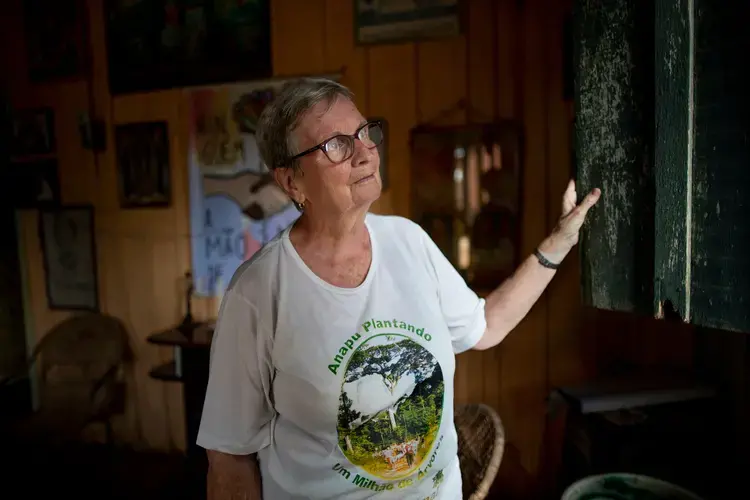

Education Resource
Meet the Journalist: Jesse Hyde
Ever since the 2018 election of Jair Bolsonaro, a far-right populist with a disdain for science...

Education Resource
Meet the Journalist: Jesse Hyde
Ever since the 2018 election of Jair Bolsonaro, a far-right populist with a disdain for science...


